I find it most apt to dine at a restaurant whose name literally means “the Trujillo Spring”, when we are in the heart of Spring, and Juan and I are enjoying a Spring date night out.
We obviously did not travel all the way to Trujillo, Peru, but were still within the comfortable confines of the Argentine capital, Buenos Aires. However, a little diversion in eating habits cannot be any bad. (On a side note, the word “diversion” in Spanish literally means “fun”, so I’ll say that any variation in food and eating, and the occasional but intentional decision to try a new type of cuisine definitely has to be fun.)
My cooking professor Pelusa Molina always says “Decime que comes, y te digo quien sos”, which literally translates to “Tell me what you eat, and I will tell you who you are.“
And I think the phrase rings so true – the one sure way of getting to know another culture is to immerse yourself in its eating habits, whether via observation or actual experimentation. Cuisine and cooking methods play such a defining role in every culture, that sometimes it’s impossible to even try to understand another cultural group if you haven’t sat down with them at the table and tried their food. And if you’re planning to get to know another culture or ethnic group, be open to trying their more popular and common dishes, before you judge and say you don’t like it because of how it looks or sounds.
Eating, writing and discovering other cuisines from foreign cultures has always been a fascinating activity for me. Particularly now that I try to investigate and do a little research on the food that I eat, instead of allowing them to merely exist as a fragment of my culinary memory, I realize that I’m fast expanding my knowledge of different cultures and peoples, simply by being curious about the foods they eat.
I’d say, when in Peru, eat as the Peruvians do. (Or in my case, when in a Peruvian Restaurant, eat as the Peruvians do.)
Compared to prices in most Porteño restaurants nowadays, Primavera Trujillana is a restaurant with very reasonable prices (between 50-70 pesos for main dishes, and between 80-100 pesos per person for dinner). Located at Franklin D. Roosevelt 1627 in the Belgrano neighborhood, and just a couple of streets away from Barrio Chino (Chinatown in Buenos Aires), it is not very near any subway station but you can reach it easily using the public bus system or going there by car.
Trujillo is a city in northwestern Peru, and is the capital of the La Libertad Region. It is located on the banks of the Moche River, near its mouth at the Pacific Ocean, in a valley of great cultural hegemony with Moche and Chimu cultures at its respective time. It is the central core of the second most populous metropolitan area of Peru. So this restaurant, whose name means “the Trujillo Spring”, is probably aiming to transport its customers to this cultural city of Trujillo by giving us a taste of Trujillo’s flavors.
Primavera Trujillana’s upper terrace:
And its wine collection:
So.. Juan & I started our culinary experience in this small and humble restaurant, kicking off our meal with Cancha, toasted Peruvian corn, which the restaurant served as a complimentary appetizer. (In Spanish “cancha” usually means a court (i.e. football or tennis court), so it’s pretty weird for this corn to be named after a court.) It was crunchy but airy in the middle, slightly salted and extremely, dangerously addictive. We were filling ourselves up with this corn starter way before ordering our food.
Cancha: Toasted Peruvian corn
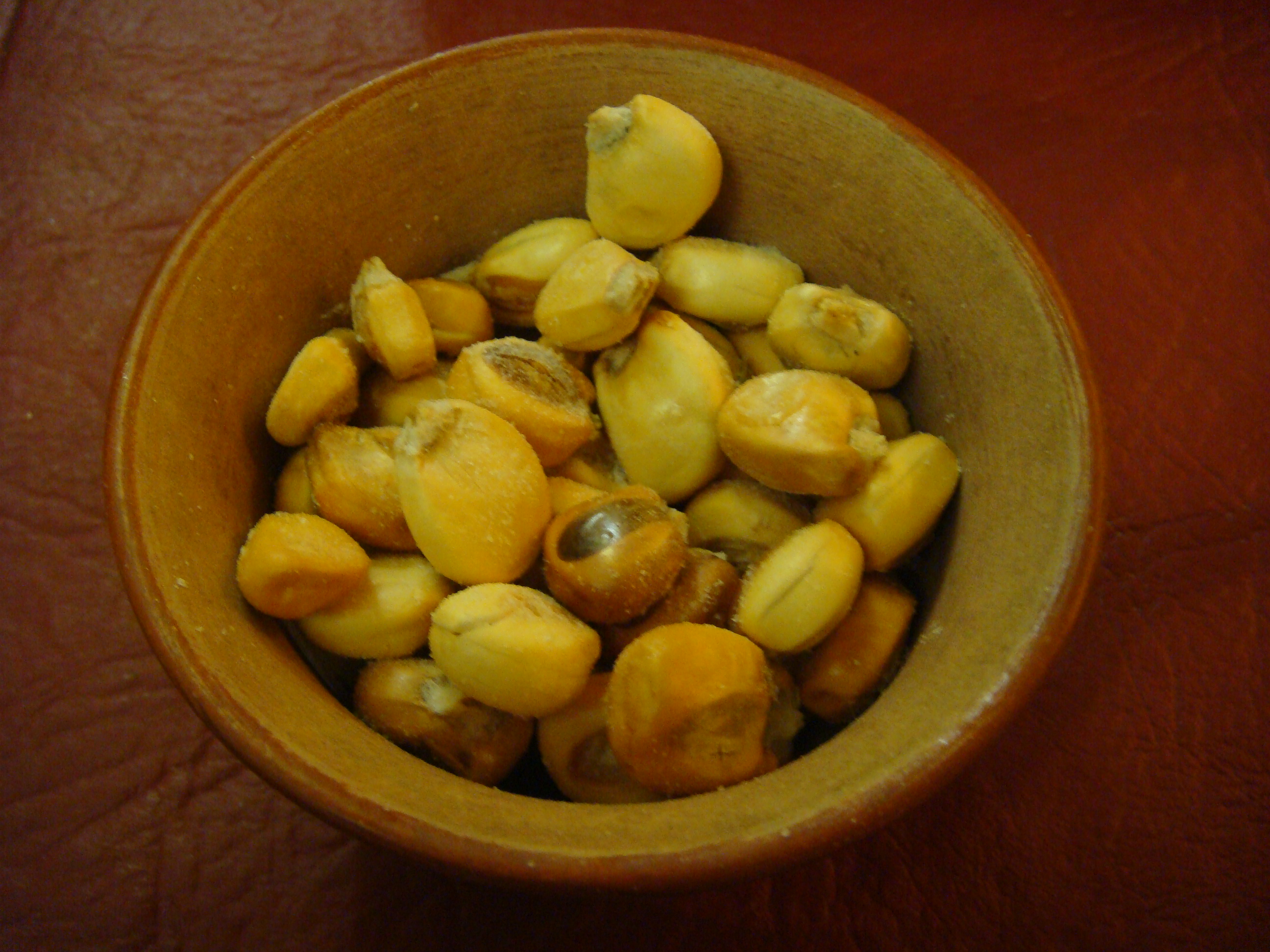
Cancha (Toasted Peruvian Corn)
Cancha is a popular snack in the Andean countries, often served alongside ceviche (which I will discuss later on), the South American Food section on About.com tells us. It’s made from a special variety of corn (maiz chulpe) that doesn’t pop like popcorn, but instead swells into a sort of homemade corn nut. Cancha is great for parties – everyone loves to munch on it while enjoying their pisco sours, and it’s easy to prepare.
Since Cancha goes great with pisco sours, we were dead set on trying out this traditional Peruvian cocktail. (Do note that Argentina’s neighbor Chile also claims it as its national drink, a debate that might go on forever.)
Passion fruit-flavoured Pisco Sour
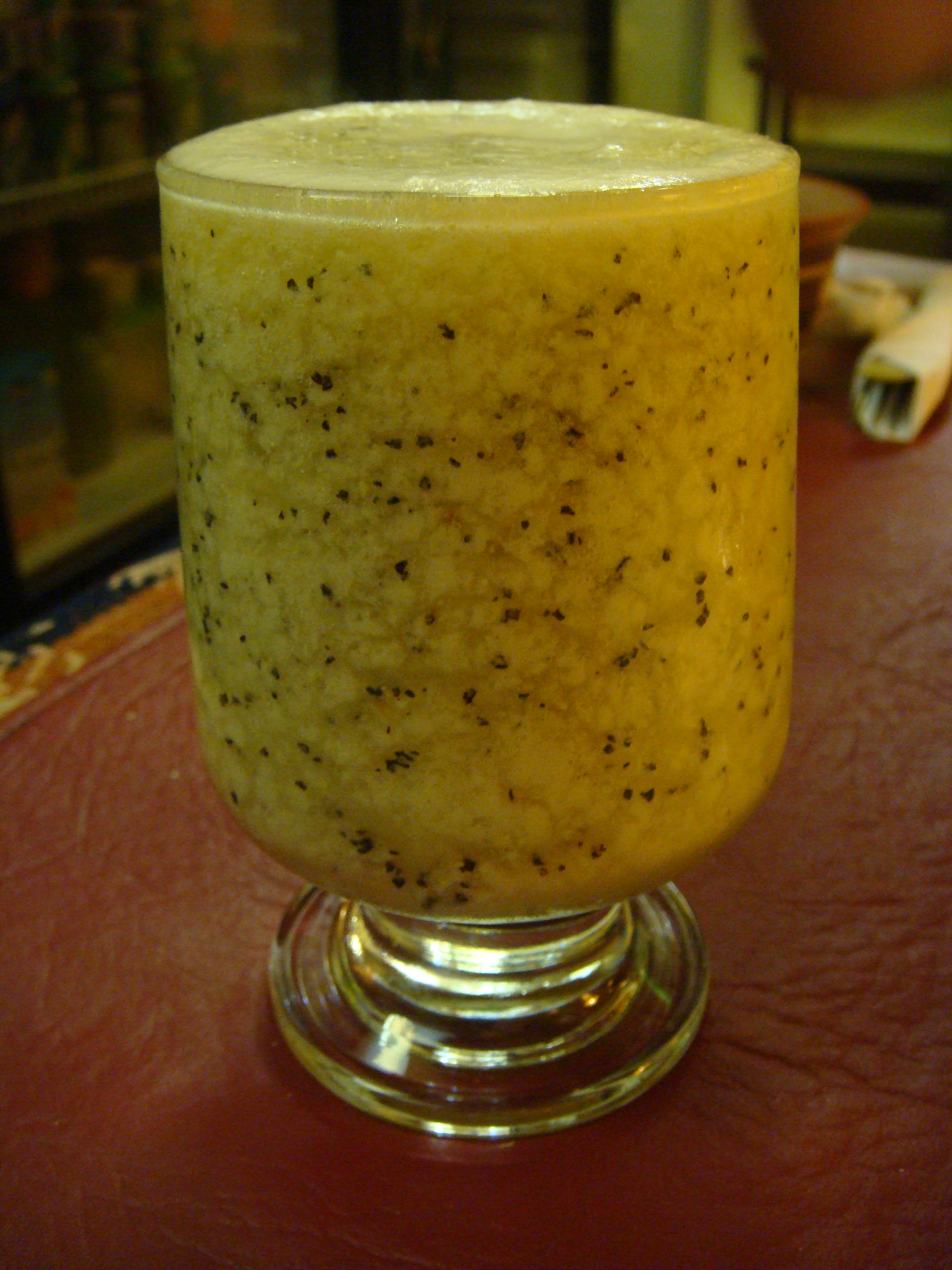
Sweet & Refreshing Passion Fruit Pisco Sour… thirsty yet??
According to Wikipedia, the Pisco Sour is a cocktail typical of western South American cuisine. The drink’s name is a combination of the Quechua word Pisco (bird) and the term sour (in reference to the mixed drink family of the same name). The Peruvian Pisco Sour requires the use of Peruvian Pisco as the base liquor and the addition of lime (or lemon) juice, syrup, ice, egg white, and Angostura bitters. Other variants of the cocktail include those created with fruits such as pineapple or plants such as coca leaves.
I had tried a pretty bad classic Pisco Sour once, and didn’t have a very good impression of it. This time however, we decided to try another version of the Pisco Sour, one more reminiscent of summer and the beach, so we plunged ahead with a Passion fruit variant. A brilliant choice. It was sweet yet refreshing, with the Passion Fruit seeds adding a nice grainy texture and polka-dot look to the yellow-colored cocktail.
It was now time to move onto our main course. We zoomed in one of the restaurant’s specialty, Camarones Ajillo.
Camarones Ajillo: Garlic Shrimp
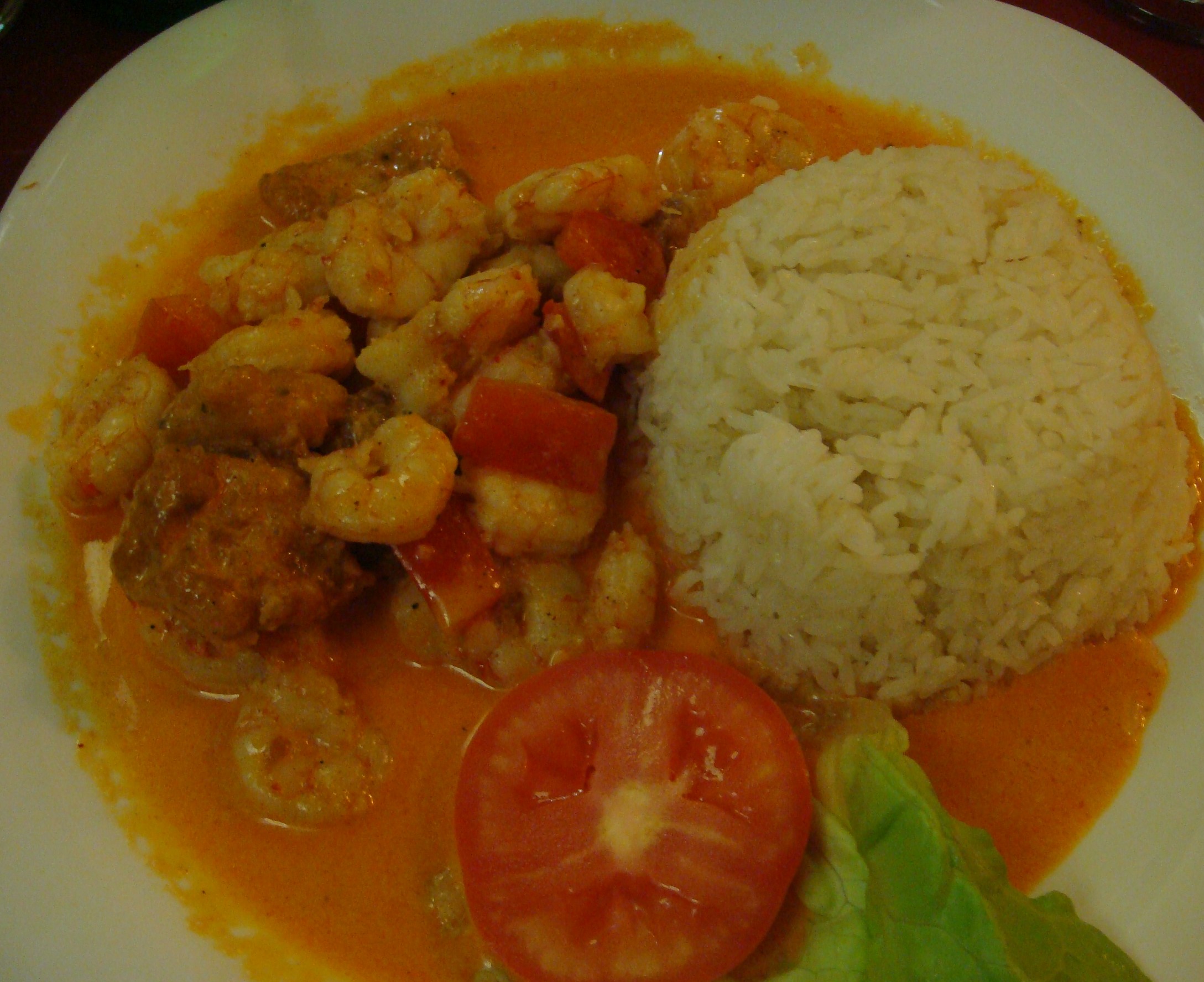
Spicy, yummy Camarones Ajillo
This was literally a plate of shrimp drizzled in some sort of garlic sauce (which to my taste buds appeared to have some combination of tomatoes and onions as well), together with small pieces of fried fish fillet, as well as a side of plain white rice. The light-orange colored sauce was a little spicy, and reminded me of orange curry with plenty of coconut milk (although no curry or coconut milk is involved at all). I’d give this dish an 8/10, because it was very palatable, but did give me quite a bit of thirst afterwards.
We didn’t order Ceviche this time around, but I thought I’d introduce this dish to you anyway, since it’s so widely associated with Peruvian-Japanese cuisine.
Ceviche
Ceviche (also spelled cebiche, or seviche) is a seafood dish popular in the coastal regions of the Americas, especially Central and South America. The dish is typically made from fresh raw fish marinated in citrus juices, such as lemon or lime, and spiced with ají or chili peppers. Additional seasonings, such as chopped onions, salt, and coriander, may also be added. Ceviche is usually accompanied by side dishes that complement its flavors, such as sweet potato, lettuce, corn, or avocado. As the dish is not cooked with heat, it must be prepared fresh to minimize the risk of food poisoning. It may be safer to prepare it with frozen or blast-frozen fish due to Anisakis parasites.
After eating every grain of rice on my plate (I’m weird like that, I’ve always made it a point to finish all the food on my plate, regardless of how much food has been piled on), we were finally ready to move to dessert.
Juan was insistent on ordering a dessert recommended by his colleague, which to me has a very weird-sounding name. In English, this dessert literally means “the sigh of a woman from Lima”.
Suspiro a la Limeña
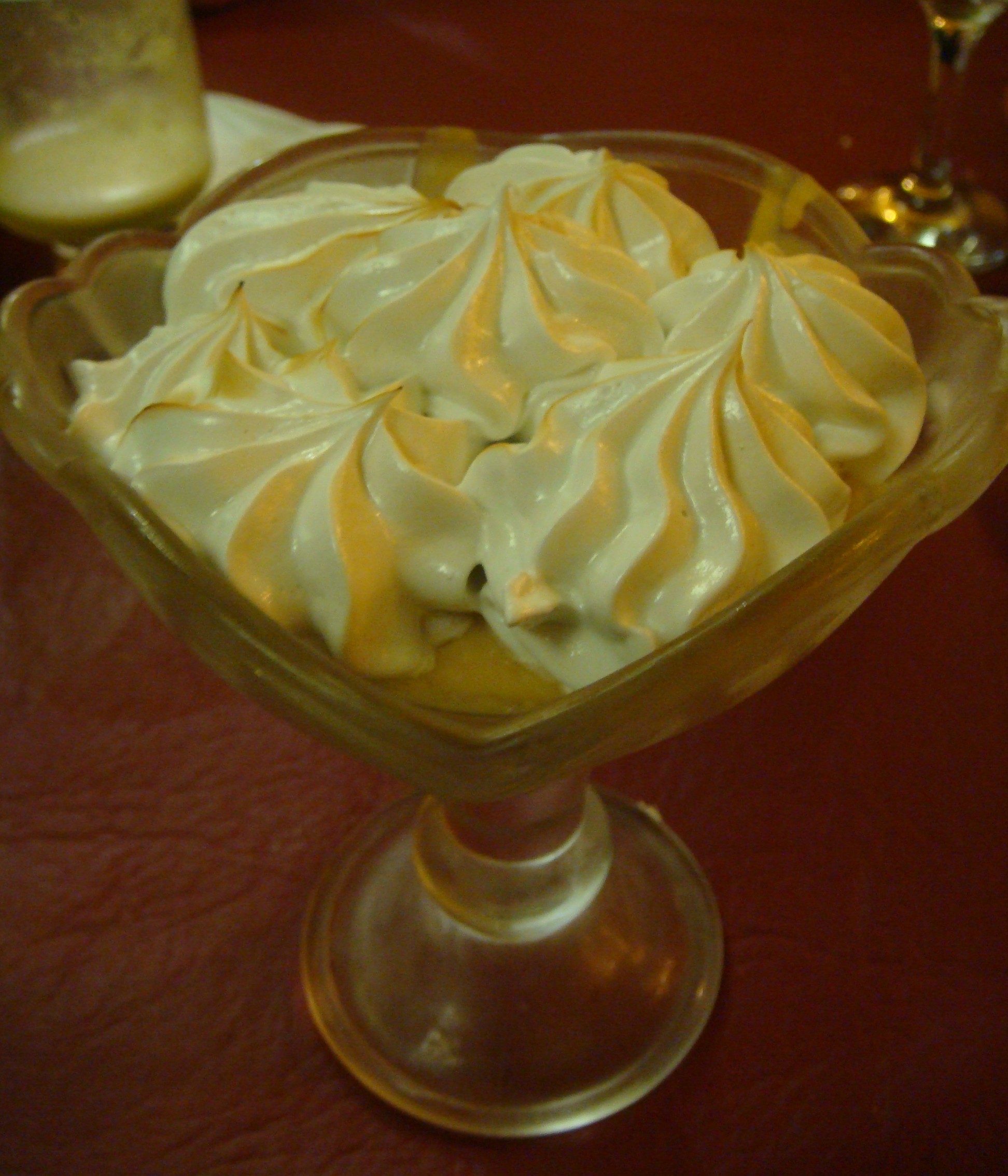
Suspiro a la Limena
Suspiro a la Limeña is another Spanish-influenced dessert that uses Dulce de leche, which derives from the Spanish Blancmange. The bottom layer is made of dulce de leche enriched with egg yolks. The top layer consists of meringue made with port wine. This classic criollo dessert is said to have been named by the famous Peruvian poet and author José Gálvez whose wife doña Amparo Ayarez was famous for her cooking. When asked what inspired the name, he reportedly replied, “Because it is soft and sweet, like the sigh of a woman.” In this case, it would be a woman from Lima, a Limeña.
To be honest, I liked this dessert the least. The meringue topping was fine, but the bottom layer was too thick and sweet for my liking. I guess that even after almost 3 years living in Argentina, my taste buds still haven’t gotten used to overly sweet desserts, even if they are supposed to be the house specialty.
Overall though… I really enjoyed dinner at this small, slightly-cramped restaurant, despite the slight lack of privacy for intimate conversations, yellow lighting, and yes, the occasional cockroach. (I suppose that coming from Asia where I know better than to look too closely at the kitchen or restaurant floors, this didn’t bother me that much).
For its affordable pricing, rather good food, and a new experience, I’d give this place 7/10.


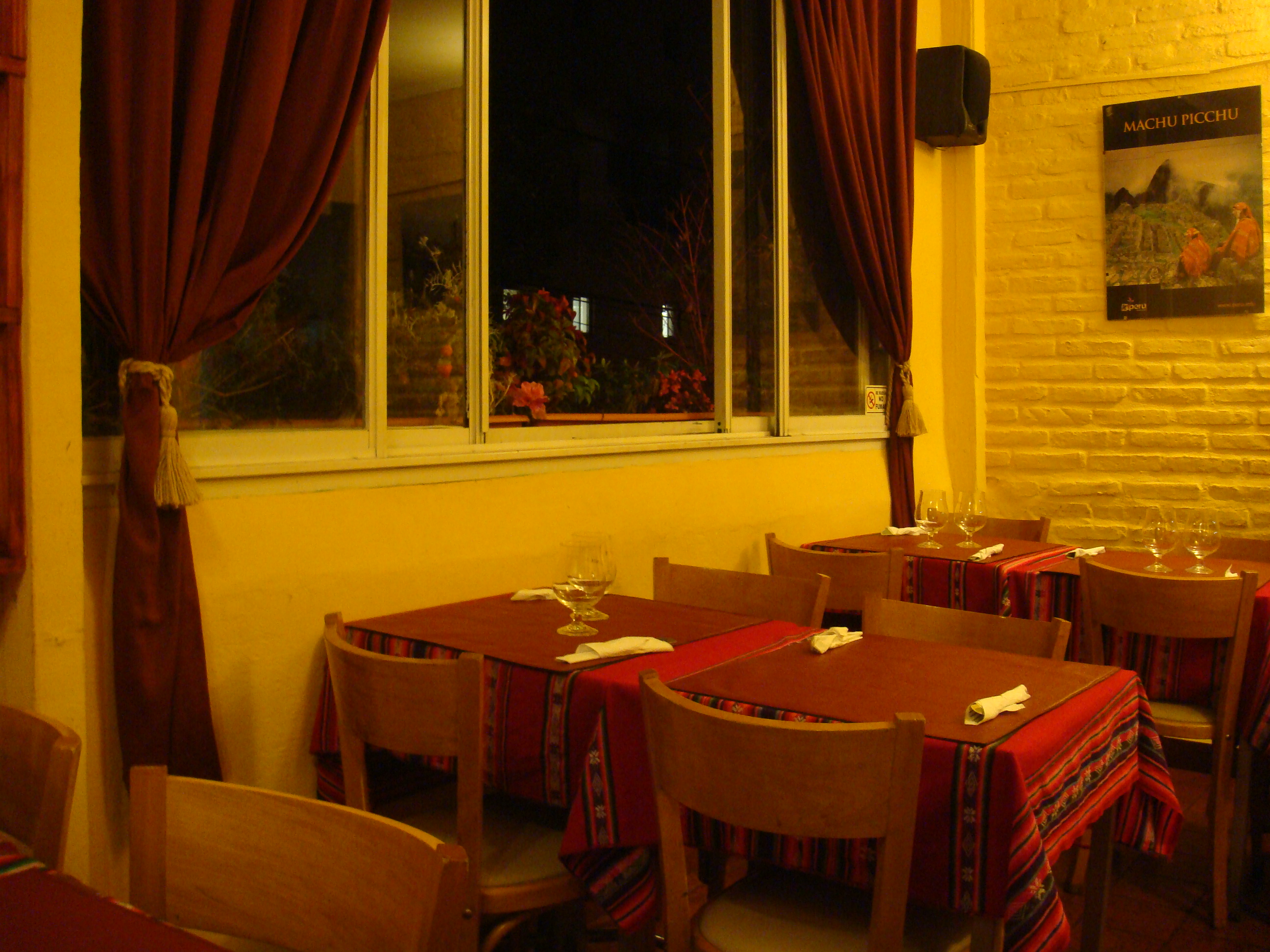
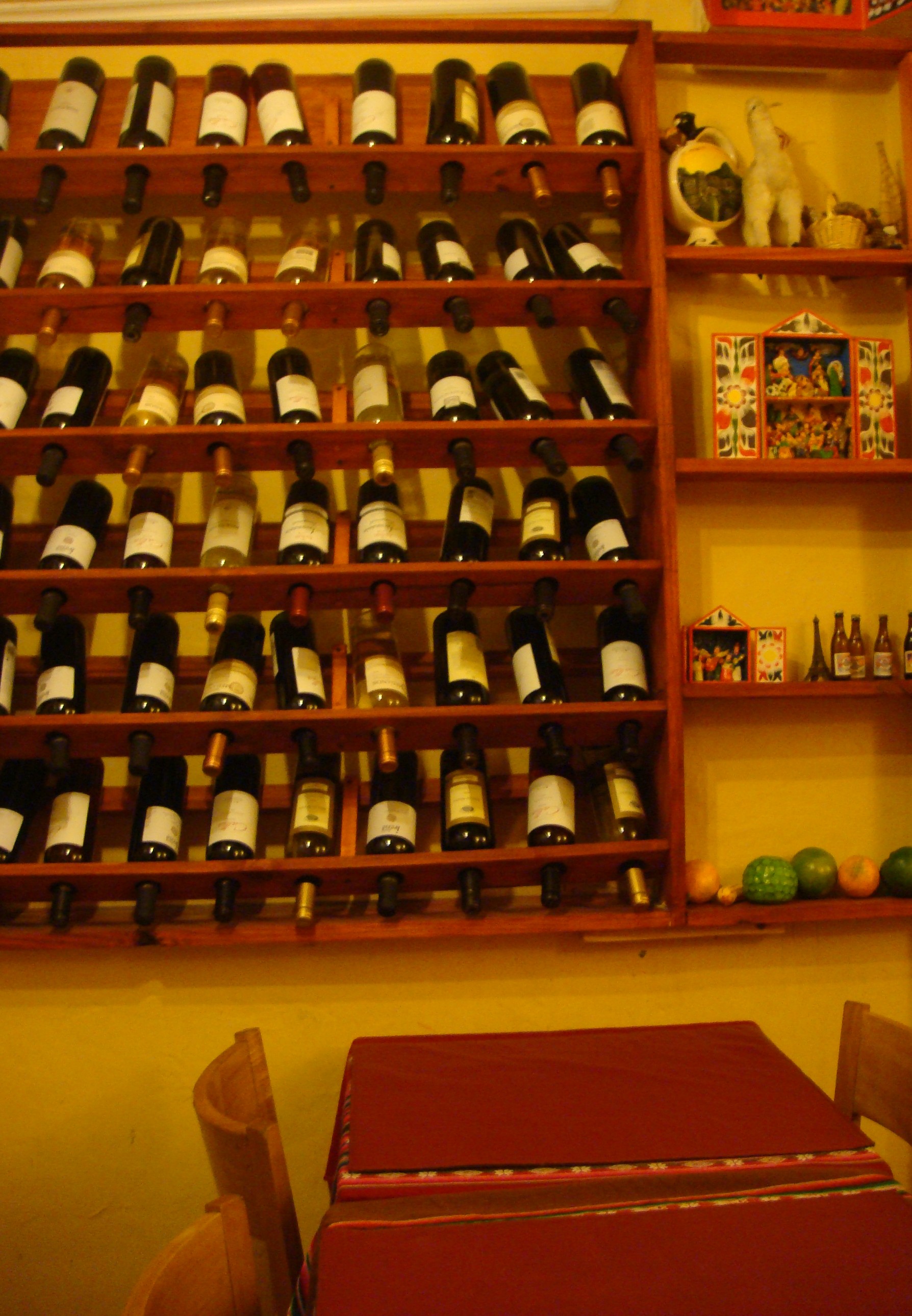
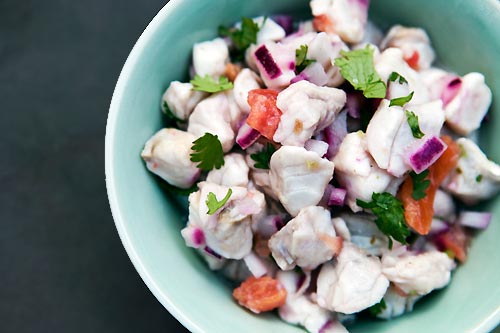





i love love love peruvian food.
That’s awesome!
What are you favorite Peruvian dishes? So I’ll try them next time I go to another Peruvian restaurant!
ceviche is a must. lomo saltado is very common. peruvian steak with eggs and fried bananas. and chorizo…that brought memory 🙂